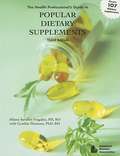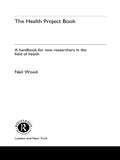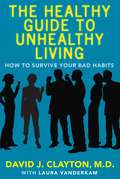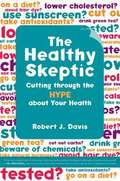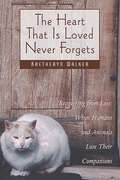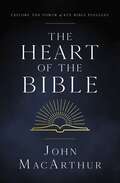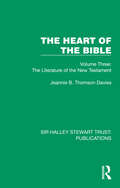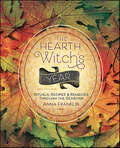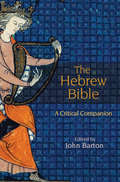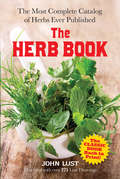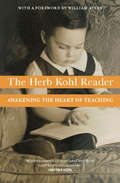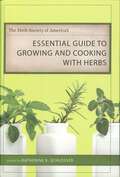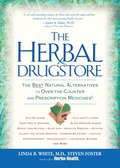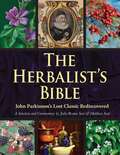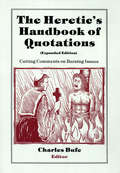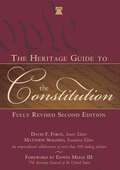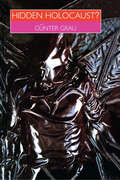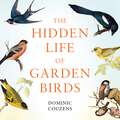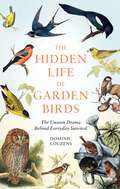- Table View
- List View
The Health Fix
by Dr Dr Ayan Panja'The only health manual you will ever need' - Dr Rangan ChatterjeeStarting with the experience of his own illness, Dr Ayan Panja, NHS GP and lifestyle medicine expert, brings a unique personalised framework to tailor targeted lifestyle-based interventions to you, with his groundbreaking new book THE HEALTH FIX. Unlike many approaches to health and wellbeing, THE HEALTH FIX focuses on the 'why' rather than just the 'what' with a toolkit:-Learn how to elegantly tighten up on the 8 factors which affect your health the most day to day-Improve your ability to control your habits-Understand the interplay between your symptoms and your biology-Experience the subtle power of "how, what and when"-Generate your own targeted lifestyle prescription -Apply the 'fixes' that are relevant only to you-Feel the difference within 8 weeksWith the rising tide of non-communicable disease such as long Covid, type 2 diabetes, cardiovascular disease, gastrointestinal conditions and increasing mental health need, Dr Ayan blends in the science and evidence into eye-opening case studies which demonstrate how the patient story lays everything out. The unique HEALTH FIX toolkit will help you change your health for good by understanding the story of you.
The Health Professional's Guide to Popular Dietary Supplements (Third Edition)
by Allison Sarubin-Fragakis Cynthia ThomsonTwenty-nine new dietary supplements have been added to this edition! This guide comprehensively explores the media claims, drug-supplement interactions, dosage information and relevant research for more than 100 of today's most popular dietary supplements. Completely revised, updated, and indexed information is provided for dietetics professionals and their clients. Written by industry experts, this guide's recommendations are reliable and backed by credible clinical research.
The Health Project Book: A Handbook for New Researchers in the Field
by Dr Neil Wood Neil WoodThe Health Project Book is a practical and detailed guide to all aspects of conducting a research project in health. It is relevant to anyone working in the health field who needs to design a study, collect the data, analyse the findings and write up a report. Clear advice and examples are given in each of these areas.Case studies illustrate the use of:* CD-Rom Facilities* the Cochrane database on the world wide web* qualitative analysis software.Individual chapters cover:* ethical considerations* the selection of samples* questionnaire design* working in a laboratory* conducting interviews* statistical and qualitative analysis.Further advice is included on how to write a research paper critically, and how to make effective verbal presentations of findings.Neil Wood has supervised student projects in health over many years and this handbook is based on his experience in teaching students how to get the best out of themselves and their project. It will be an extremely useful resource for students and professionals in nursing, health studies, health sciences, psychology and related fields.
The Healthy Guide to Unhealthy Living
by Laura Vanderkam David ClaytonSTRAIGHT TALK FROM A DOCTOR ON HOW TO MINIMIZE THE DAMAGE FROM THE UNHEALTHY LIFESTYLE CHOICES WE ALL KNOW WE SHOULDN'T MAKE -- BUT DO ANYWAY There are thousands of books out there on how to live a healthy life, but let's be honest: most of us don't want to live a healthy life -- we want to know how to live our unhealthy lives better. The Healthy Guide to Unhealthy Living is a straightforward and honest guide to maintaining the fast-paced lifestyle you're accustomed to, without giving up all the bad habits that come along with it. Whether you stayed up all night prepping for that early presentation or want to lose ten pounds fast for a high school reunion, whether you drank too much last night or wound up in an unfamiliar bed this morning, here's the practical advice you need for minimizing the damage and moving on with your life. A few of the issues addressed in this book include: Drinking and drugs: From easing the hangover pain to kicking a drug habit Sex: Pregnancy, STDs, and why you shouldn't believe everything you read on the Internet Pushing the limits: Sleepless nights, stress, and unavoidable life-related anxieties Everyday habits: Smoking, fast food, all-nighters, and the rest of those New Year's resolutions you haven't gotten around to yet Whether you indulge yourself in Vegas or your own backyard, when it comes to your health, it's easy to assume the worst. But even if you don't live a completely virtuous life, The Healthy Guide to Unhealthy Living says that if you make some smart choices, you can avoid major worries or embarrassment. While this book won't take the place of your own doctor, it will give you some shortcuts to healthier habits and better living -- like safer sex and better sex, or a healthier diet and a better body -- that might become habits you can live with.
The Healthy Pet Manual: A Guide to the Prevention and Treatment of Cancer
by Gary Kowalski Deborah StrawExamines the environmental, dietary, and lifestyle-related causes of cancer in pets and how to safeguard their well-being• Cancer is the number one killer of most domestic animals• Includes health care information on dogs, cats, ferrets, rabbits, and guinea pigs• The first consumer-oriented book to assess conventional and alternative treatment optionsKeeping their pets healthy and happy is the number one priority of pet owners. Having lost four animal companions to cancer, author Deborah Straw became frustrated by the lack of information about what was causing the disease and wanted to know what she could do to treat and prevent it. This thorough and comprehensive guide is the result of her search for answers. It provides readers with the knowledge of how to ward off the unforeseen causes of cancer and protect the safety and health of their pets.Cancer is the number one killer of most domestic animals. This revised and expanded edition of Why Is Cancer Killing Our Pets? includes the most up-to-date information on the environmental, dietary, and vaccine-related culprits that may cause cancer in pets and the preventive measures that can be taken against this disease. Readers whose pets have been diagnosed with cancer will benefit from the full spectrum of both conventional and alternative treatments presented in this book--from chemotherapy and laser surgery to herbal therapy, acupuncture, and touch therapy. In addition, readers will find guidance about caring for a sick pet and grieving his or her loss should the pet die. Full of information, options, and support, this is an essential resource for protecting pets.
The Healthy Skeptic: Cutting Through the Hype about Your Health
by Robert J. DavisIt happens every day: we pick up a newspaper or magazine or turn on the television and are bombarded with urgent advice about how to stay healthy. Lose weight! Lower your cholesterol! Early detection saves lives! Sunscreen prevents cancer! But in many cases, pronouncements we rarely think to question turn out to be half-truths that are being pushed by various individuals or groups to advance their own agendas. The Healthy Skeptic explores who these health promoters are--from journalists and celebrities to industry-funded groups and consumer activists--what their motives are, and how they are spinning us in ways we often don't realize. This treasure trove of little-known facts, written by a seasoned health reporter, provides invaluable tips, tools, and resources to help readers think more critically about what they're being told. Becoming a healthy skeptic is vital, Davis argues, because following the right advice can have a profound impact on overall health and longevity.
The Heart That Is Loved Never Forgets: When Humans and Animals Lose Their Companions
by Kaetheryn WalkerStories that address the grieving process of humans and animals who have lost their companions and that give advice on how best to help yourself and others recover • Gives practical advice on recovery, including self-care, support systems, and homeopathic recipes, and also discusses the painful topic of euthanasia • The first book to address the topic of animal grief at the loss of a companion, explaining how to recognize grief in animals and how to help them heal Anyone who has lost a treasured animal companion knows that this can be as devastating as losing a human loved one. Unfortunately, our society's sympathy with this loss is not commensurate with the actual grief people feel. Kaetheryn Walker fills this void by presenting true stories of the grief process she and others went through after the death of their animal companions. She gives practical advice on recovery, including daily self-care, support systems, and homeopathic remedies, and discusses the painful topic of euthanasia as well. Her book is also the first to address the important topic of animal grief at the loss of a companion. She explains how to recognize grief in animals and how to help them heal.
The Heart of the Bible: Explore the Power of Key Bible Passages
by John F. MacArthurJohn Macarthur&’s collection of the Bible verses that every Christian needs to know.All of Scripture is important and meaningful, but there are certain passages that are most helpful for becoming grounded in God&’s truth. In The Heart of the Bible, Pastor John MacArthur shares a selection of verses that he believes are most significant—the ones he considers the heart of the Bible.Written in a devotional style, each verse is followed by John MacArthur&’s thoughts and comments, giving you a deeper understanding of the passages and their importance to Christians. The verses focus on the nature of the Bible, God, salvation, and discipleship, and are categorized topically. Some of the topics covered are: Knowing and trusting our great GodWhat happened at the crossAccepting God&’s salvationLiving worthy of our callingWhat it means to follow JesusThese treasured pieces of Scripture are not just meant to be read—they&’re meant to be savored, repeated, and meditated on. Open your heart to God&’s Word and you will be transformed.John MacArthur- "Unleashing God's Truth One Verse At a Time"™
The Heart of the Bible: Volume Three: The Literature of the New Testament (Sir Halley Stewart Trust: Publications)
by Jeannie B. Thomson DaviesOriginally published in 1933, from the volume one preface: “The aim of this particular venture is to present the writings now collected in the volume called the Bible in an order approaching that in which they came into being. The hope is that a considerable amount of both the Old and New Testaments may be read in a fresh setting, so that questions about inconsistencies in the Bible, or about its varying levels of morality, or about its uneven value for religious education can no longer be fired as poison darts to attack its life and influence…. This is an attempt to combine reading the Bible with learning to understand it.” Of particular relevance to those interested in religious studies, today it can be read in its historical context.This book is a re-issue originally published in 1933. The language used and views portrayed are a reflection of its era and no offence is meant by the Publishers to any reader by this re-publication.
The Hearth Witch's Year: Rituals, Recipes & Remedies Through the Seasons (The Hearth Witch's Series)
by Anna FranklinA Season-by-Season Guide to an Enchanted Natural LifeThe world is filled with magic, reflected back to us through the cycles of nature, if we can just slow down and learn how to channel it. This book is a journey through the year, exploring its tides, seasons, and festivals. It provides practical advice for celebrating the whole cycle—not just the eight sabbats—with rituals, meditations, projects, and invocations to help you discover the magical rhythms of the natural world.Join Anna Franklin, bestselling author of The Hearth Witch's Compendium, as she shares more than one hundred spells, recipes, remedies, and crafts designed to bring enchantment, healing, and joy into your life. Within these pages you will also discover natural cleaners and time-honored projects for the hearth and home to help you celebrate the cycles of the seasons, honor the Gods, and manifest your deepest spirituality.
The Hebrew Bible: A Critical Companion
by John BartonThis book brings together some of the world's most exciting scholars from across a variety of disciplines to provide a concise and accessible guide to the Hebrew Bible. It covers every major genre of book in the Old Testament together with in-depth discussions of major themes such as human nature, covenant, creation, ethics, ritual and purity, sacred space, and monotheism. This authoritative overview sets each book within its historical and cultural context in the ancient Near East, paying special attention to its sociological setting. It provides new insights into the reception of the books and the different ways they have been studied, from historical-critical enquiry to modern advocacy approaches such as feminism and liberation theology. It also includes a guide to biblical translations and textual criticism and helpful suggestions for further reading.Featuring contributions from experts with backgrounds in the Jewish and Christian faith traditions as well as secular scholars in the humanities and social sciences, The Hebrew Bible is the perfect starting place for anyone seeking a user-friendly introduction to the Old Testament, and an invaluable reference book for students and teachers.
The Herb Almanac: A seasonal guide to medicinal plants
by Chelsea Physic GardenA beautiful and accessible seasonal guide to herbalism from the historic botanic garden.Discover the best times of the year for growing specific healing herbs and also when and how to forage for wild medicine, such as water mint, St John's Wort, hawthorn berries and rosehips. Recipes are included for how to use these herbs, along with folklore stories from herb wives and hedge witches, the meanings behind their names and the history of how these natural medicines were discovered.There are plenty of tips for how to create your own medicinal herb garden, even with just a few pots, along with a biodynamic guide for sowing, planting and harvesting. Including detailed hand-drawn line illustrations to help deepen your understanding, The Herb Almanac is the perfect gift for any nature lover.CONTENTS INCLUDES:IntroductionIncluding using herbs as seasonally appropriate remedies and tonics, an overview of herbs in folklore, wild medicine, magic, superstition, ritual, tradition and literature and herbs in religion and floriography (the language of flowers)Gathering and Using HerbsIncluding safe, legal and successful foraging, a brief introduction to growing your own herbs and preparing, drying and preserving herbsWitches' Brews: Poisonous Plants Including an overview of herbs with interesting stories that cannot be easily used, e.g. wormwood, hemlock and mandrakeHerb EncyclopediaIncluding detailed information on over 50 different herbs
The Herb Almanac: A seasonal guide to medicinal plants
by Chelsea Physic GardenA beautiful and accessible seasonal guide to herbalism from the historic botanic garden.Discover the best times of the year for growing specific healing herbs and also when and how to forage for wild medicine, such as water mint, St John's Wort, hawthorn berries and rosehips. Recipes are included for how to use these herbs, along with folklore stories from herb wives and hedge witches, the meanings behind their names and the history of how these natural medicines were discovered.There are plenty of tips for how to create your own medicinal herb garden, even with just a few pots, along with a biodynamic guide for sowing, planting and harvesting. Including detailed hand-drawn line illustrations to help deepen your understanding, The Herb Almanac is the perfect gift for any nature lover.CONTENTS INCLUDES:IntroductionIncluding using herbs as seasonally appropriate remedies and tonics, an overview of herbs in folklore, wild medicine, magic, superstition, ritual, tradition and literature and herbs in religion and floriography (the language of flowers)Gathering and Using HerbsIncluding safe, legal and successful foraging, a brief introduction to growing your own herbs and preparing, drying and preserving herbsWitches' Brews: Poisonous Plants Including an overview of herbs with interesting stories that cannot be easily used, e.g. wormwood, hemlock and mandrakeHerb EncyclopediaIncluding detailed information on over 50 different herbs
The Herb Book: The Most Complete Catalog of Herbs Ever Published
by John Lust"I have an old copy of this book that I've had for years and would never let go of, no matter how many times I moved and thinned out my books. This is a re-release and I'm really happy to see it back in print. Part two of the book is the real treasure. It is an alphabetical list of herbs that gives detailed information about their properties, including any cautions required." — Lora's Rants & ReviewsAlso known as "The Natural Remedy Bible," The Herb Book provides a comprehensive resource for building a livelier, healthier, happier life. More than 2,000 listings offer remedies for ragged nerves, nightmares, and coughing fits as well as suggestions for adding spice to recipes, coloring fabrics, freshening breath, and a host of other benefits. Complete and concise descriptions of herbs, illustrated by more than 275 line drawings, offer the most comprehensive catalog of "miracle plants" ever published. Written by an expert and pioneer in the field, this easy-to-use reference features three parts. The first presents introductory historical information and background for using the rest of the book. The second part features individual numbered listings of medicinal plants with their botanical descriptions and uses. The third part emphasizes the variety of uses for the plants listed in Part 2, including mixtures for medicinal treatments, nutritious and culinary plants, cosmetic and aromatic purposes, plant dyes, and other applications. The book concludes with a captivating look at plant-related astrology, lore, and legends.
The Herb Kohl Reader: Awakening the Heart of Teaching
by Herbert KohlThe best writing from a lifetime in the trenches and at the typewriter, from the renowned and much-beloved National Book Award–winning educator. In more than forty books on subjects ranging from social justice to mathematics, morality to parenthood, Herb Kohl has earned a place as one of our foremost &“educators who write.&” With Marian Wright Edelman, Mike Rose, Lisa Delpit, and Vivian Paley among his fans, Kohl is &“a singular figure in education,&” as William Ayers says in his foreword, &“it&’s clear that Herb Kohl&’s influence has resonated, echoed, and multiplied.&” Now, for the first time, readers can find collected in one place key essays and excerpts spanning the whole of Kohl&’s career, including practical as well as theoretical writings. Selections come from Kohl&’s classic 36 Children, his National Book Award–winning The View from the Oak (co-authored with his wife Judy), and all his best-known and beloved books. The Herb Kohl Reader is destined to become a major new resource for old fans and a new generation of teachers and parents. &“Kohl has created his own brand of teaching . . . [He is] a remarkable teacher who discovered in his first teaching assignment that in education he could keep playing with toys, didn&’t have to stop learning, and could use what he knew in the service of others.&” —Lisa Delpit, The New York Times &“An infinitely vulnerable and honest human being who has made it his vocation to peddle hope.&” —Jonathan Kozol
The Herb Society of America's Essential Guide to Growing and Cooking with Herbs: A Novel (Voices of the South)
by Katherine K. SchlosserFresh herbs offer a healthy and delicious way to spice up any meal, but growing and cooking with these delectable plants are endeavors fraught with uncertainty. What herbs will grow year-round on my kitchen windowsill? What foods complement rosemary? Which part of a lemongrass plant has the best flavor? Can I really eat the geraniums growing in my flower bed? This indispensable guide from The Herb Society of America takes the guesswork out of using herbs in the garden and in the kitchen by providing detailed information for cultivating a wide variety of herbs, along with easy-to-follow recipes that will surely impress even the most discerning palate. Ranging from Alliums (onions, chives, and garlic) to Zingiber (ginger), the volume's first section provides horticultural information for each of the sixty-three herbs found in the National Herb Garden's Culinary Garden, including common and botanical names, family, place of origin, hardiness, and general light and soil requirements. Botanical sketches accompany many of the entries. Each entry also includes a short history of the herb, gardening basics, and suggestions for using the herb in your kitchen. Culinary herbs without Generally Recognized as Safe (GRAS) Status are included in a separate section, with an explanation of their history and ornamental value. An informative introduction to this section compares several different definitions of the word herb, explains the advantages of fresh over dried herbs, describes the proper storage and use of spices, and suggests the best timing and methods for harvesting herbs. In the second part of the book, HSA members offer classic and creative recipes for more than two hundred dishes incorporating a variety of herbs. Learn how to use the aromatic and flavorful herbs in your garden to enhance stews and casseroles, create dips and pestos, and add a new dimension to your favorite liqueurs. Among the mouth-watering recipes featured are Lemon Basil Tea Bread, Chicken Linguine with Fennel and Tarragon, Five-Herb Pasta Salad, and Rosemary Fizz.The concluding section of the book contains a fascinating personal tour of the two-and-one-half-acre National Herb Garden, which lies in the heart of Washington, D.C., at the center of the United States National Arboretum, and of its various themed areas, including the Knot Garden, the Antique and Heritage Rose Garden, the Dye Garden, the Colonial Garden, the Native American Garden, the Beverage Garden, the Medicinal Garden, and many others. Complete plant lists accompany the description of each garden.Green thumbs and gourmets alike will find inspiration in these pages to look at herbs in new ways -- perhaps to see beyond their cupboards and into their own yards for ways to liven up their meals -- and will gain the knowledge and confidence to grow and use herbs effectively. More than a gardening book, more than a cookbook, The Herb Society of America's Essential Guide to Growing and Cooking with Herbs will prove to be an indispensable companion for all herb lovers.
The Herbal Drugstore: The Best Natural Alternatives to Over-the-Counter and Prescription Medicines!
by Steven Foster Linda B. White The Staff Of Herbs For HealthEase Symptoms, Fight Disease, and Supercharge Immunity--All Without Drugs or Chemicals! You're about to enter a completely different kind of drugstore. One where herbal medicines are offered right alongside conventional pharmaceuticals. Where bottles of feverfew stand next to bottles of aspirin, and echinacea has its place among other cold and flu remedies.The Herbal Drugstore is the only place where you can compare mainstream drug treatments and their herbal alternatives for close to 100 common health problems. You'll find herbs that have the same healing powers as many prescription and over-the-counter medications--only they're cheaper and gentler, with few or no side effects.Whether you need fast first-aid or long-term relief, The Herbal Drugstore has a remedy for you. Here's just a sampling:* Immobilized by arthritis? Rub on capsaicin cream, a natural pain reliever made from hot peppers* Can't sleep? Start snoozing with valerian--it's as effective as Valium, but it isn't addictive* Want to lose a few pounds? Get a helping hand from psyllium, an herbal alternative to appetite suppressants* Feeling stressed? Calm jangled nerves with ginseng--it won't undermine alertness* Battling bronchitis? Clear up that cough with licorice, a natural expectorant* Need help with high blood pressure? Turn to hawthorn--it has much in common with beta blockers, except for the side effectsThe Herbal Drugstore features these and many more herbal remedies--712 in all! They're profiled right next to their pharmaceutical counterparts, so you can make your own comparisons and decide which treatments are best for you.
The Herbalist in the Kitchen (The Food Series)
by Gary AllenThe foodie's ultimate herbal encyclopedia Created as the ideal reference for anyone with a serious interest in cooking with herbs, spices, or related plant materials, The Herbalist in the Kitchen is truly encyclopedic in scope. It provides complete information about the uses, botany, toxicity, and flavor chemistry of herbs, as well as a listing for nearly every name that an ingredient is known by around the world. Even including herbs and spices not yet seen in the United States (but likely to be featured in recipes for adventurous cooks soon), The Herbalist in the Kitchen is organized into one hundred and four sections, each consisting of a single botanical family. The book provides all available information about the chemical compounds responsible for a plant's characteristic taste and scent, which allows cooks to consider new subtleties and potential alternatives. For instance, the primary flavoring ingredient of cloves is eugenol; when a cook knows that bay leaves also contain eugenol, a range of exciting substitutions becomes clear. The Herbalist in the Kitchen also provides guidance about measuring herbs, enabling readers to understand the dated measuring standards from antique cookbooks. A volume in The Food Series, edited by Andrew W. Smith
The Herbalist's Bible: John Parkinson's Lost Classic Rediscovered
by Julie Bruton-Seal Matthew SealA lost classic of Western herbalism-rediscovered and restored with 200 full-color images.Herbalist to King Charles I, John Parkinson (1567-1650) was a master apothecary, herbalist, and gardener. Famous in his own lifetime for his influential books, his magnum opus, the Theatrum Botanicum, was published in 1640 and ran to 1,766 large pages. The sheer scope and size was perhaps to prove the book's downfall, because while it was much revered-and plagiarized-it was never reprinted and, centuries later, has attained the status of an extremely rare and valuable book. Parkinson was writing at a time when Western herbalism was at its zenith, and his skills as a gardener (from his grounds in Covent Garden) combined perfectly with his passion for science, observation, and historical scholarship.In the The Herbalist's Bible, Julie Bruton-Seal and Matthew Seal have beautifully combined selections from Parkinson's book with their own modern commentary on how each plant is used today to create a truly one-of-a-kind, comprehensive collection of herbal information old and new. Parkinson's clear and lively description of a chosen plant's "vertues" or healing properties side-by-side with the editors' notes-including copious herbal recipes-make this the perfect book for students and practitioners of herbalism, historians, and gardeners, all of whom will welcome this restoration of Parkinson's lost classic.
The Heretic's Handbook of Quotations: Cutting Comments on Burning Issues
by Charles BufeThis oversize book contains thousands of quotations on politics, sex, law, labor, capitalism, anarchism, women, religion, the arts, and 20 other subjects. Organized in chapters by subject, this book also contains an index, capsule biographies, and dozens of cartoons and illustrations. Hundreds of writers are represented, including Bakunin, Mencken, the Marxes, (Groucho and Karl), Twain, Reich, Voltaire, Shaw, Chomsky, Diderot, Bookchin, Goldman, Berkman, Paine, Kroptkin, and Bierce.
The Heritage Guide to the Constitution: Fully Revised Second Edition
by Edwin Meese III Matthew Spalding David F. ForteA landmark work of more than one hundred scholars, The Heritage Guide to the Constitution is a unique line-by-line analysis explaining every clause of America's founding charter and its contemporary meaning.In this fully revised second edition, leading scholars in law, history, and public policy offer more than two hundred updated and incisive essays on every clause of the Constitution.From the stirring words of the Preamble to the Twenty-seventh Amendment, you will gain new insights into the ideas that made America, important debates that continue from our Founding, and the Constitution's true meaning for our nation.
The Hermeneutics of Christological Psalmody in Paul
by Matthew ScottBy reexamining the quotation of psalms in Paul, this book offers a fresh interpretation of the New Testament's reception of the Old Testament. Richard Hays's influential Echoes of Scripture in the Letters of Paul astutely identified the rhetorical device of metalepsis, or echo, as central to the study of Pauline hermeneutics. Hays's Paul was in sympathetic dialogue with the voice of Scripture, but Matthew Scott now challenges this assumption with close readings of echoed psalms voiced by David and Christ. Paul's use of metalepsis in Romans and 2 Corinthians reveals him to be a provocative, even polemical, reader who appropriates the words of David for a Christological purpose. Scott also illustrates how Christ succeeds David as the premier psalmist in Paul and considers whether, in doing so, Christ acts as inheritor or iconoclast.
The Hidden Holocaust?: Gay and Lesbian Persecution in Germany 1933-45
by Günter GrauThe persecution of lesbians and gay men by the Nazis is a subject that has been constantly debated during the last decade, providing a theme for books, articles, and plays. Until recently the discussion has remained speculative: most of the relevant documents were stored in closed East German archives, and access was denied to scholars and researchers.As a result of the unification of East and West Germany, these archives are now open. Hidden Holocaust, by the German scholars Gunter Grau and Claudia Shoppmann of Humboldt Uinversity, Berlin, demonstrates that the eradication of homosexuals was a declared gol of the Nazis even before they took power in 1933, and provide proof of the systematic anti-gay campaigns, the methods used tjo justify discrimination, and the incarceration mutilation and murder of gay men and women in Nazi concentration camps. A chilling but groud-breaking work in gay and lesbian studies.
The Hidden Life of Garden Birds: The unseen drama behind everyday survival
by Dominic CouzensA glimpse into the secret lives of over 50 garden birds, with beautiful illustrations and intriguing facts.Did you know that woodpeckers are capable of learning simple codes? Hooded crows can form connections with humans? A jay's call affects the behaviour of surrounding squirrels?All these fascinating bird activities and more are revealed in The Hidden Life of Garden Birds. Unusual feeding behaviour is just the tip of the iceberg. From territorial conflict and strange relationships with man, to breeding and nesting oddities, this book exposes all the drama behind garden birds' everyday survival - making it the perfect gift for birdwatchers.The Hidden Life of Garden Birds will enlighten you to the secret going-ons of the common creatures you can spot from the comfort of your back doorstep.(p) 2024 Octopus Publishing Group
The Hidden Life of Garden Birds: The unseen drama behind everyday survival
by Dominic CouzensA glimpse into the secret lives of over 50 garden birds, with beautiful illustrations and intriguing factsDid you know that woodpeckers are capable of learning simple codes? Hooded crows can form connections with humans? A jay's call affects the behaviour of surrounding squirrels?All these fascinating bird activities and more are revealed in The Hidden Life of Garden Birds. Unusual feeding behaviour is just the tip of the iceberg. From territorial conflict and strange relationships with man, to breeding and nesting oddities, this book exposes all the drama behind garden birds' everyday survival - making it the perfect gift for birdwatchers.The Hidden Life of Garden Birds will enlighten you to the secret going-ons of the common creatures you can spot from the comfort of your back doorstep.

